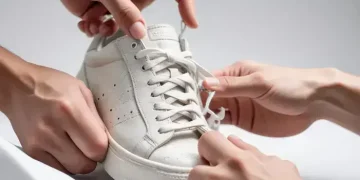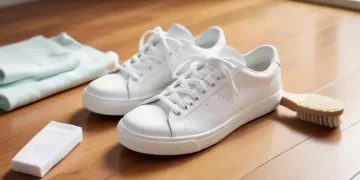What is ‘Deadstock’? A Full Explanation for New Sneakerheads
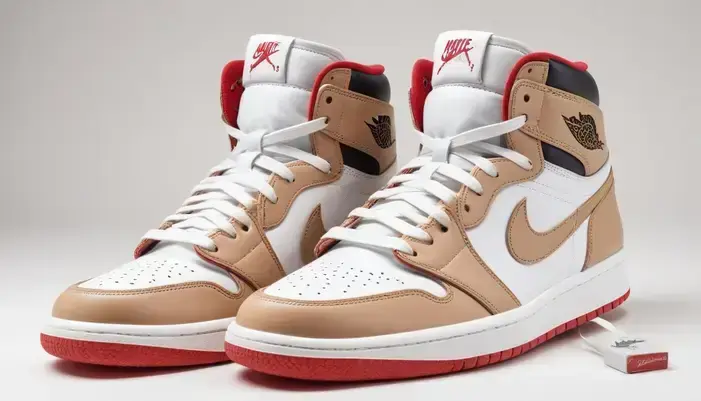
Ever wondered why some sneaker collectors pay thousands for shoes that have never been worn? Deadstock sneakers represent the holy grail of sneaker collecting – unworn, original condition kicks that tell a story frozen in time. Let’s unpack what makes these shoes so special and why they’re worth the investment.
The exact definition of deadstock sneakers
In the sneaker world, deadstock has a very specific meaning that goes beyond just “new.” It refers to sneakers that are in their original, unworn condition, exactly as they left the factory. This term is crucial for collectors because it guarantees authenticity and pristine quality.
The Three Pillars of Deadstock Status
For a sneaker to be considered truly deadstock, it must meet three non-negotiable criteria. First, the shoes must be completely unworn, with no signs of wear on the soles, uppers, or laces. Second, they must include all original components – meaning the original box, tissue paper, tags, and any extra laces that came with them. Third, the sneakers should show no significant aging or damage from improper storage.
Many people confuse deadstock with terms like “new in box” or “vintage new,” but there’s an important distinction. While all deadstock sneakers are new, not all new sneakers qualify as deadstock. The deadstock label specifically implies that the shoes have been preserved in collector-grade condition, often for many years.
Why the Exact Definition Matters
Understanding this precise definition protects you as a buyer. When a seller uses the term deadstock, you should expect perfection. If you receive shoes with yellowed soles, faded colors, or missing original components, they don’t meet the true deadstock standard. This clarity helps maintain trust in the sneaker market and ensures collectors get what they pay for.
How deadstock differs from used and vintage shoes
Understanding how deadstock differs from used and vintage shoes is essential for any serious collector. While these terms often get mixed up, they represent very different conditions and values. Deadstock means the shoes are in original, unworn condition – essentially frozen in time from when they were manufactured.
Deadstock vs. Used Shoes
The difference here is straightforward. Used shoes show clear signs of wear: creased soles, scuffed uppers, and worn-down treads. Deadstock shoes, however, maintain their factory-fresh appearance with no wear patterns. Even shoes worn just once cannot be called deadstock, as the act of wearing changes the materials immediately.
Deadstock vs. Vintage Shoes
This is where confusion often occurs. Vintage refers to the age of the shoes (typically 10+ years old), while deadstock describes the condition. A shoe can be vintage but not deadstock if it’s been worn. More importantly, a shoe can be deadstock but not vintage if it’s a recent release that’s been kept unworn. The rarest finds are vintage deadstock sneakers – old releases that have never been worn.
Many sellers mistakenly label used vintage shoes as “deadstock” because they’re old, but age alone doesn’t qualify them. True deadstock requires both age and pristine condition. This distinction matters because deadstock commands significantly higher prices due to its rarity and preservation quality.
Why deadstock sneakers command premium prices
Deadstock sneakers often sell for astonishing prices because they represent the ultimate combination of rarity, preservation, and historical significance. When you buy deadstock, you’re not just purchasing shoes – you’re acquiring a piece of sneaker history in its purest form.
Rarity and Limited Supply
The fundamental reason for premium pricing is simple economics: supply and demand. Most sneakers from past decades were worn rather than preserved. As time passes, fewer deadstock pairs remain available, making them increasingly rare. For limited edition releases from the 80s or 90s, there might be only a handful of deadstock pairs left worldwide.
Perfect Preservation Value
Deadstock condition means the shoes have avoided the three main enemies of sneaker aging: wear, sunlight, and improper storage. The soles haven’t oxidized, the colors remain vibrant, and the materials retain their original texture. This level of preservation is incredibly difficult to achieve over decades, which justifies the higher price tag.
Collectors are willing to pay premiums because deadstock sneakers serve as reference pieces showing exactly how the shoes looked when new. They help authenticate other pairs and provide a benchmark for restoration projects. The original packaging and tags also add significant value, completing the “time capsule” experience.
Investment Potential
Unlike worn sneakers that depreciate, deadstock pairs often appreciate over time. As more collectors enter the market and available deadstock decreases, prices typically rise. This investment potential makes them attractive beyond just wearing – they become tangible assets in a growing collectibles market.
The three key criteria for authentic deadstock status
Authentic deadstock status requires meeting three strict criteria that separate true collector-grade sneakers from merely new ones. These standards ensure consistency across the sneaker market and protect buyers from misleading claims.
1. Completely Unworn Condition
The shoes must show absolutely no signs of wear. This means pristine soles with no creases or scuff marks, perfect uppers without any stretching or deformation, and original laces that have never been tied. Even trying on the shoes for a few minutes can disqualify them from deadstock status because the materials immediately begin to adapt to the wearer’s feet.
2. All Original Components Present
True deadstock requires everything that originally came with the shoes. This includes the original box in good condition, the tissue paper used for packing, any tags that were attached, and all accessories like extra laces or insoles. Missing any of these components typically downgrades the shoes to “new without box” or similar classifications.
3. No Significant Aging or Damage
While some aging is natural over time, authentic deadstock sneakers should not show major deterioration. This means no severe sole separation, no significant color fading from sunlight exposure, and no mold or water damage from poor storage. Minor factory imperfections are acceptable, but the shoes must remain in near-perfect condition considering their age.
These three criteria work together to create a clear standard. When all are met, you can confidently call sneakers deadstock. If any criterion fails, the shoes fall into a different category like “excellent condition vintage” or “new without tags.”
Common misconceptions about deadstock terminology
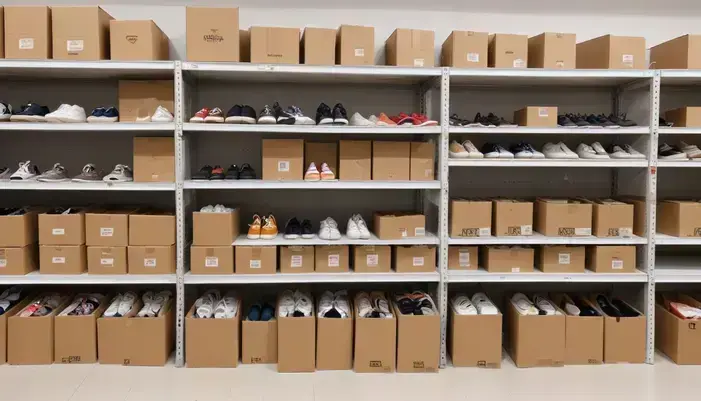
Many sneaker enthusiasts misunderstand what deadstock truly means, leading to common misconceptions that can cause confusion in the collector market. Clearing up these misunderstandings helps everyone make better buying decisions.
“Deadstock Means Vintage”
One major misconception is that deadstock automatically means old or vintage. Actually, deadstock refers only to condition, not age. A sneaker released last year can be deadstock if it’s unworn with all original components. Conversely, a 30-year-old sneaker that’s been worn isn’t deadstock, even if it’s vintage.
“Tried On Still Counts as Deadstock”
Many sellers claim shoes are deadstock even if they were “only tried on.” This is incorrect. True deadstock means never worn, never tried on, and never even laced up if they came unlaced. The moment shoes touch feet, even for fitting, they begin to change shape and show signs of wear.
“New Without Box Can Be Deadstock”
Another common error is thinking shoes without original packaging can qualify as deadstock. The complete package – including box, tags, and tissue paper – is essential for authentic deadstock status. Missing any original components typically moves the shoes into a different classification like “new without box.”
“Minor Wear Doesn’t Matter”
Some believe that small signs of wear or aging don’t affect deadstock status. However, the standard requires near-perfect preservation. Even minor sole oxidation, slight color fading, or small storage marks can disqualify shoes from true deadstock classification, though they might still be excellent condition vintage.
Understanding these distinctions prevents disappointment when buying and ensures proper terminology when selling. Accurate labeling maintains trust throughout the sneaker community.
How to verify deadstock condition before buying
Verifying deadstock condition before purchasing requires careful examination and asking the right questions. Smart buyers develop a systematic approach to avoid costly mistakes when investing in premium sneakers.
Request Detailed Photographs
Always ask for specific photos that prove deadstock status. You need clear shots of the soles from multiple angles to show no wear patterns, close-ups of the uppers to reveal no creasing or stretching, and images of all original components including box, tags, and tissue paper. Photos should be taken in good lighting without filters that might hide imperfections.
Check for Common Red Flags
Look for signs that indicate the shoes aren’t truly deadstock. Check the insoles for any foot impressions, examine the laces for tying marks, and inspect the box for water damage or crushing. Also watch for inconsistent aging – if the box looks decades old but the shoes appear brand new, there might be a mismatch.
Ask Specific Questions
Don’t hesitate to ask direct questions about the sneaker’s history. Key questions include: “Have these ever been tried on or worn, even indoors?” “Are all original components present and matching?” “How have they been stored over the years?” “Is there any sole separation or glue issues?” Legitimate sellers will provide honest, detailed answers.
Verify Authenticity Markers
Even deadstock sneakers can be fakes, so verify authenticity markers. Check stitching quality, material consistency, logo placement, and production dates inside the shoes. Compare these details with known authentic examples from reliable sources or authentication services.
Taking these verification steps protects your investment and ensures you’re getting true deadstock quality. When in doubt, consider using professional authentication services, especially for high-value purchases.
The importance of original packaging and tags
Original packaging and tags are not just accessories – they’re essential components that complete the deadstock story and significantly impact both value and authenticity. For serious collectors, the complete package tells the full history of the sneakers.
Packaging as Proof of Authenticity
The original box serves as crucial evidence that the shoes have been properly preserved since their release. Box labels contain important information like style codes, production dates, and sizing that help verify authenticity. Without the box, it becomes much harder to confirm that sneakers are truly deadstock and not just well-preserved used shoes.
Tags Tell the Preservation Story
Original tags provide another layer of verification. Price tags, hang tags, and even the original tissue paper show that the shoes haven’t been through multiple owners or improper handling. These elements demonstrate consistent preservation from the original purchase to the present day, which is exactly what deadstock collectors seek.
Impact on Resale Value
Complete packaging can increase a sneaker’s value by 20-30% or more compared to shoes without their original components. Collectors view the full set as a “time capsule” that preserves the entire original retail experience. Missing pieces often lead to price reductions and make the shoes less desirable to serious collectors.
Preservation of Historical Context
The packaging also preserves important historical context. Box designs, retailer stickers, and original pricing provide insights into when and where the shoes were sold. This historical documentation adds to the sneakers’ story and makes them more interesting as collectible items beyond just wearable footwear.
When evaluating deadstock sneakers, always consider the packaging as part of the overall value proposition. The complete presentation matters just as much as the shoes themselves in the collector market.
Deadstock vs. new old stock: what’s the difference?
While deadstock and new old stock (NOS) both describe unworn products, they have important distinctions that affect their value and appeal to collectors. Understanding these differences helps you make smarter purchasing decisions.
Origin and History Matters
The key difference lies in the products’ histories. Deadstock typically refers to items that were part of regular retail inventory but never sold or were kept unworn by collectors. New old stock, however, usually comes from leftover inventory that was never put out for retail sale – often found in warehouse clearances or old stock discoveries.
Packaging and Documentation
Deadstock items almost always include their original retail packaging, tags, and documentation that show they were intended for consumer sale. NOS items might come in plain boxes or without the complete retail presentation since they never reached store shelves. This affects their collectible appeal and historical context.
Condition Variations
Both should be unworn, but NOS items might show more storage-related issues since they could have been stored in less-than-ideal warehouse conditions for decades. Deadstock items from personal collections often have better preservation because collectors typically store them carefully. However, this isn’t always the case – it depends on the specific storage history.
Market Perception and Value
In the sneaker world, deadstock generally commands higher prices because it represents items that were part of the original consumer market. NOS might be seen as “new” but lacking the retail history that adds to a deadstock item’s story. However, rare NOS finds can be equally valuable, especially if they’re from limited productions.
When evaluating items, always ask about their provenance. Whether something is deadstock or NOS affects not just the price but also the story behind the product, which is often what collectors value most.
Where to find legitimate deadstock sneakers
Finding legitimate deadstock sneakers requires knowing where to look and how to verify authenticity. While rare, these treasures exist in several reliable places if you know what to look for and how to navigate each platform safely.
Specialized Marketplaces and Platforms
Established platforms like StockX, GOAT, and Stadium Goods offer authentication services that help ensure deadstock legitimacy. These services verify both authenticity and condition before shipping, providing peace of mind for buyers. However, always check seller ratings and review authentication guarantees carefully.
Reputable Consignment Stores
Physical and online consignment stores specializing in vintage sneakers often have deadstock finds. Stores like Round Two, Rif LA, and other established sneaker boutiques build reputations on authenticating their inventory. Building relationships with these stores can give you access to rare finds before they hit general markets.
Sneaker Conventions and Collector Events
Industry events and sneaker conventions bring together serious collectors and sellers. These face-to-face interactions allow for thorough inspection of deadstock claims. You can examine packaging, check condition firsthand, and often negotiate directly with knowledgeable sellers who understand true deadstock standards.
Private Collector Networks
Joining collector communities and forums can lead to private sales from trusted members. Platforms like NikeTalk and specialized Facebook groups connect enthusiasts who often have deadstock collections they’re willing to sell to fellow collectors. These networks rely on reputation and community verification.
Estate Sales and Storage Auctions
Sometimes deadstock sneakers surface in unexpected places like estate sales or storage unit auctions where original owners preserved them for decades. While these require more legwork and authentication risk, they can yield incredible finds at reasonable prices if you know what to look for.
Regardless of where you search, always prioritize verification over price. The extra cost of buying from reputable sources is worth the assurance of getting genuine deadstock sneakers.
Risks and challenges when buying deadstock
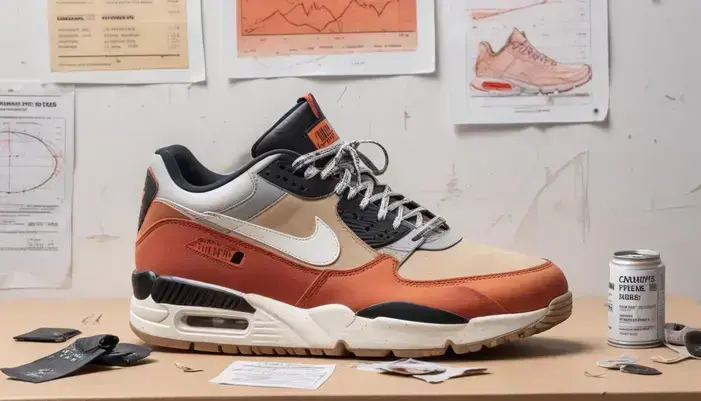
Buying deadstock sneakers involves significant risks that every collector should understand before making expensive purchases. Being aware of these challenges helps you protect your investment and make informed decisions.
Authentication and Counterfeit Risks
The biggest risk is purchasing counterfeit sneakers marketed as deadstock. Sophisticated fakes can mimic unworn condition and even include replica packaging. Always use trusted authentication services or learn to spot subtle details like stitching patterns, material quality, and production date accuracy. Even experienced collectors can be fooled by high-quality replicas.
Material Deterioration Issues
Older deadstock sneakers face natural material breakdown regardless of storage conditions. Polyurethane midsoles can crumble, glue can dry out causing separation, and certain materials may become brittle. Shoes from the 1980s and 1990s are particularly vulnerable to these issues, even if they appear perfect externally.
Misrepresented Condition Claims
Many sellers exaggerate deadstock status, using terms like “near deadstock” or “deadstock except for…” to justify higher prices. Common misrepresentations include shoes that were tried on, display models with minor wear, or items missing original components. Always request detailed photos and ask specific questions about condition history.
Storage and Preservation Problems
Improper storage can cause hidden damage that isn’t immediately visible. Sunlight exposure leads to color fading, humidity causes mold growth, and temperature fluctuations accelerate material breakdown. These issues may not show in photos but become apparent upon close inspection.
Market Value Volatility
Deadstock sneaker values can fluctuate dramatically based on market trends, celebrity endorsements, or re-releases. What seems like a solid investment today might lose value quickly if the brand releases a similar model or if collector interest shifts to different styles.
Mitigate these risks by buying from reputable sources, using escrow services for high-value purchases, and educating yourself about specific models before investing significant money.
Preserving your deadstock collection properly
Proper preservation is crucial for maintaining your deadstock collection’s value and condition over time. Following specific storage protocols can prevent common deterioration issues that plague even carefully collected sneakers.
Ideal Storage Environment
Store your deadstock sneakers in a cool, dark place with stable temperature and humidity levels. Avoid attics, basements, or garages where temperature fluctuations and moisture can damage materials. Ideal conditions are around 65-70°F with 40-50% humidity. Use silica gel packets in storage boxes to control moisture without direct contact with the shoes.
Proper Packaging Techniques
Keep sneakers in their original boxes whenever possible, but avoid stacking boxes too high to prevent crushing. Place boxes on shelves rather than floors to minimize dust and potential water damage. For extra protection, consider acid-free tissue paper between the shoes and plastic containers for the boxes themselves, but never wrap shoes directly in plastic which can trap moisture.
Regular Maintenance and Inspection
Check your collection every 6-12 months for signs of deterioration. Look for sole separation, color changes, or material brittleness. Gently flex the soles occasionally to maintain pliability, but avoid excessive handling which can transfer oils from your skin to the materials.
Light and Air Quality Management
UV light is one of the biggest enemies of deadstock preservation. Keep shoes away from direct sunlight and consider UV-protective film on windows in your storage area. Good air circulation prevents mold growth, but avoid strong air currents that can bring in dust and pollutants.
Documentation and Organization
Maintain detailed records of each pair including purchase date, original cost, and specific storage conditions. Photograph each pair annually to document condition changes. This documentation helps with insurance claims and future sales while ensuring you notice any preservation issues early.
Remember that even with perfect preservation, some aging is inevitable. The goal is to slow deterioration as much as possible while maintaining the original deadstock qualities that make your collection valuable.
Mastering the World of Deadstock Sneakers
Understanding what makes sneakers truly deadstock gives you the knowledge to navigate the collector market with confidence. From recognizing the exact criteria to knowing where to find legitimate pairs, this information helps you make smarter decisions whether you’re buying, selling, or preserving your collection.
Remember that deadstock represents more than just unworn shoes – it’s about preserving sneaker history in its purest form. The careful storage, complete packaging, and unworn condition tell a story that goes beyond ordinary footwear collecting.
As you continue your sneaker journey, use these guidelines to build a collection that maintains its value and significance. Whether you’re a new collector or an experienced enthusiast, respecting the true meaning of deadstock ensures the sneaker community maintains its standards and passion for years to come.
FAQ – Frequently Asked Questions About Deadstock Sneakers
What exactly does ‘deadstock’ mean for sneakers?
Deadstock means the sneakers are in completely original, unworn condition with all original components including box, tags, and packaging. They show no signs of wear or aging beyond natural preservation.
Can sneakers be considered deadstock if they were only tried on?
No, true deadstock requires that the shoes have never been worn or tried on. Even trying them on for a few minutes can change the materials and disqualify them from deadstock status.
How much more valuable are deadstock sneakers compared to used ones?
Deadstock sneakers can be worth 2-10 times more than used pairs, depending on the rarity and age. Limited edition deadstock sneakers from decades ago can command premium prices due to their perfect preservation.
What’s the difference between deadstock and vintage sneakers?
Vintage refers to age (typically 10+ years old), while deadstock refers to condition. A sneaker can be vintage but not deadstock if it’s been worn, or deadstock but not vintage if it’s a recent release kept unworn.
How can I verify if sneakers are truly deadstock before buying?
Request detailed photos of soles, uppers, and all original components. Ask specific questions about storage history and check for authentication. Using trusted platforms with verification services provides extra protection.
Do deadstock sneakers deteriorate over time even if unworn?
Yes, even unworn sneakers can experience material breakdown like sole separation or color fading due to age and storage conditions. Proper preservation slows this process but doesn’t stop it completely.

